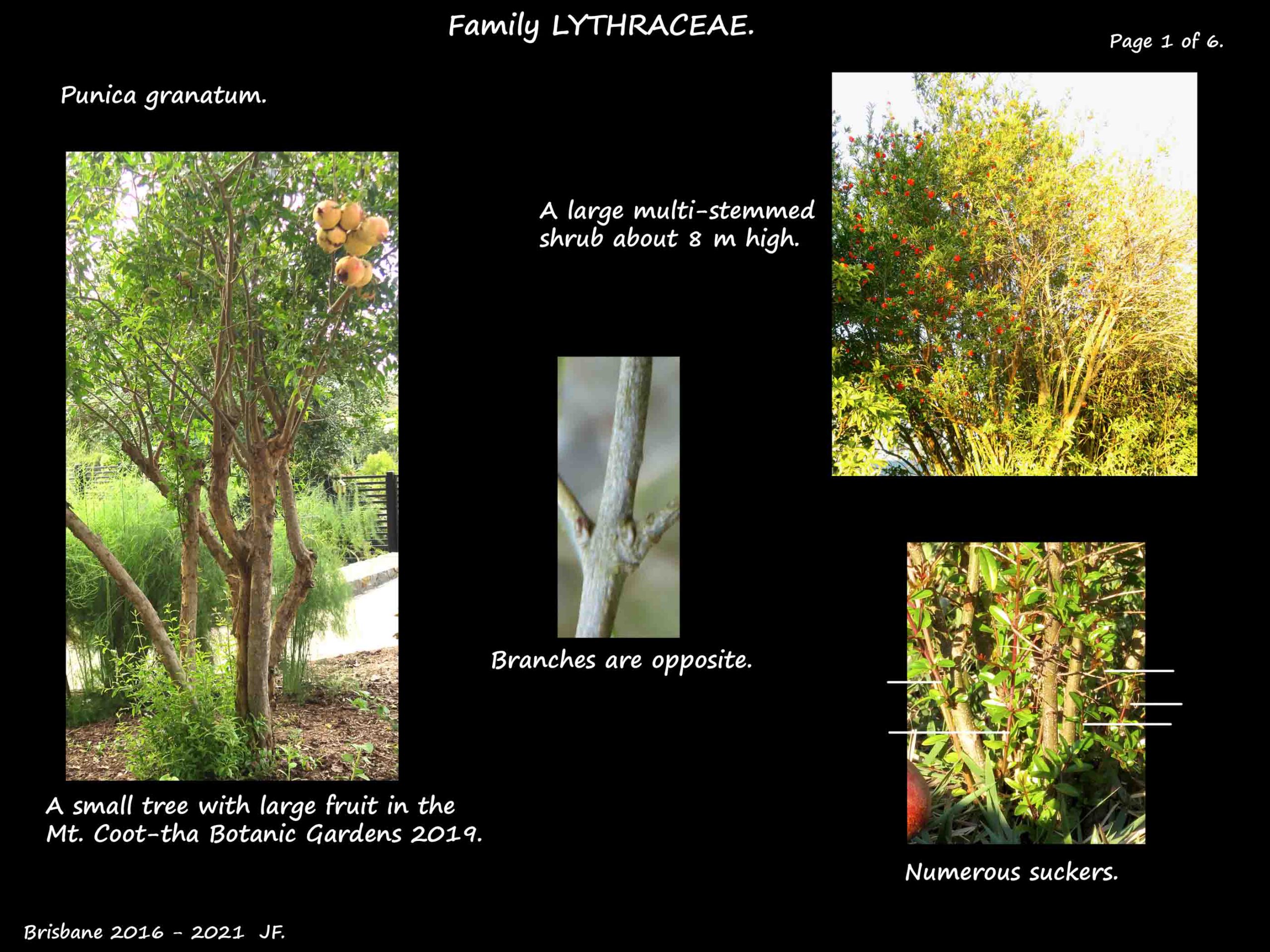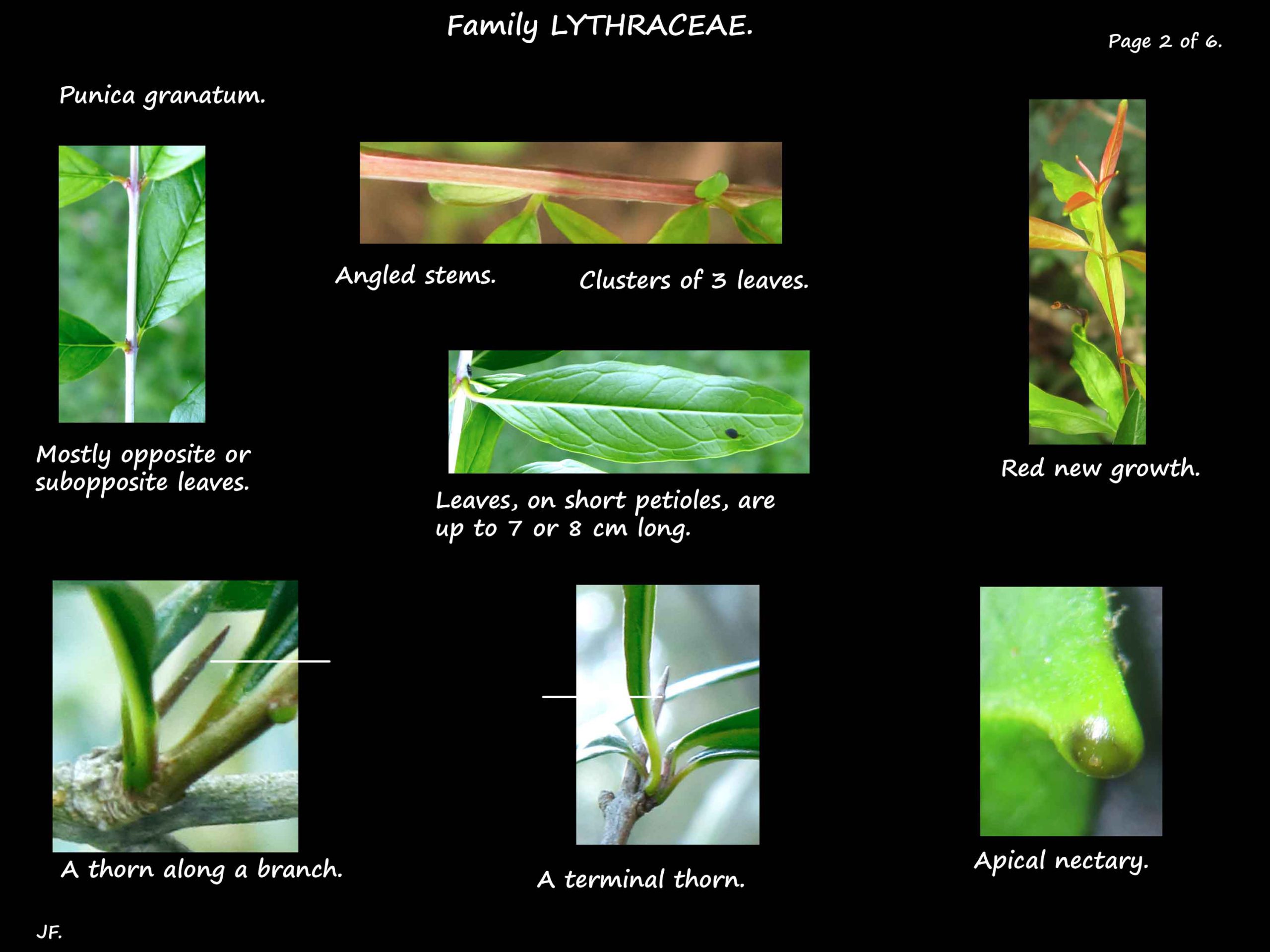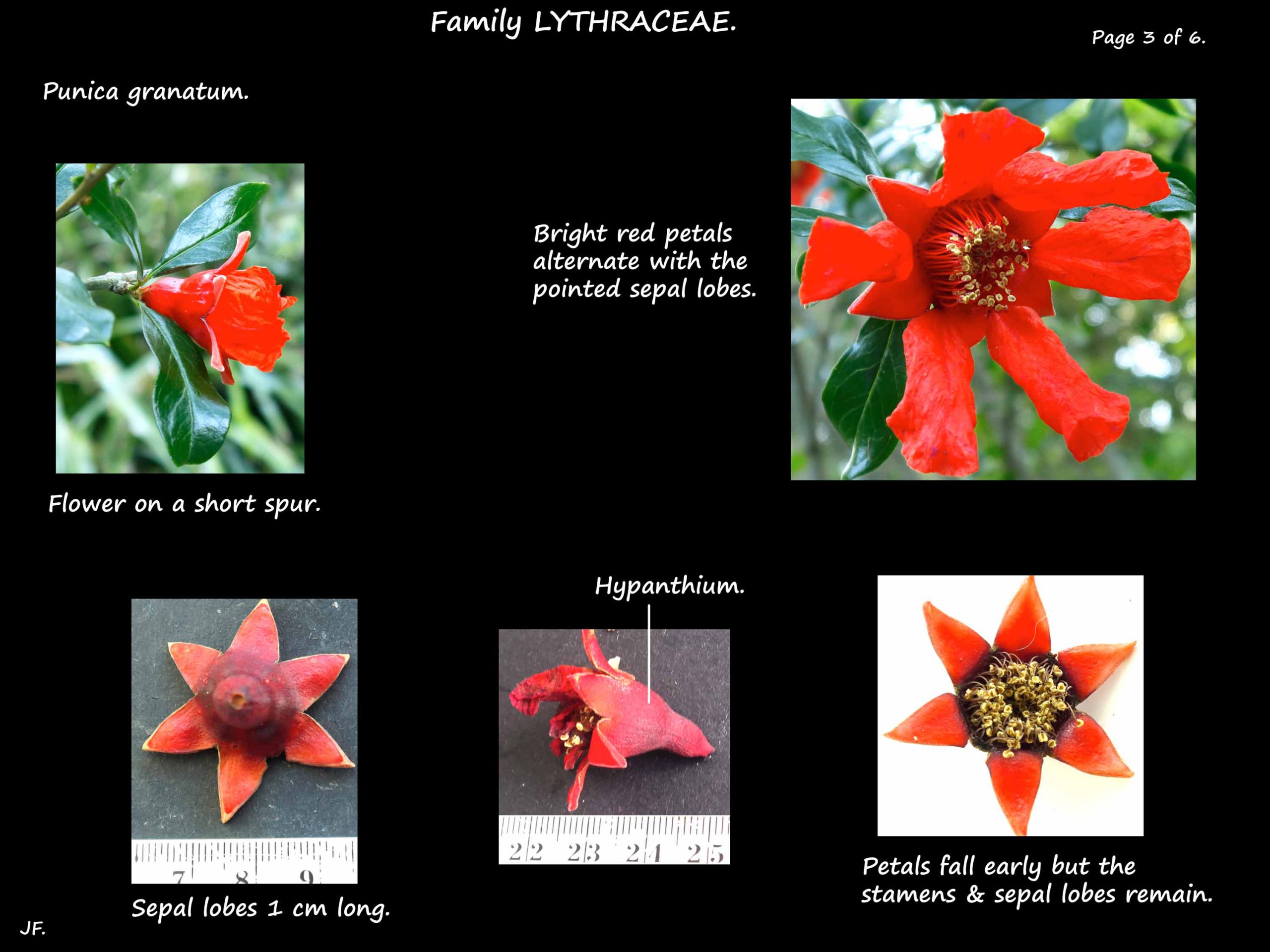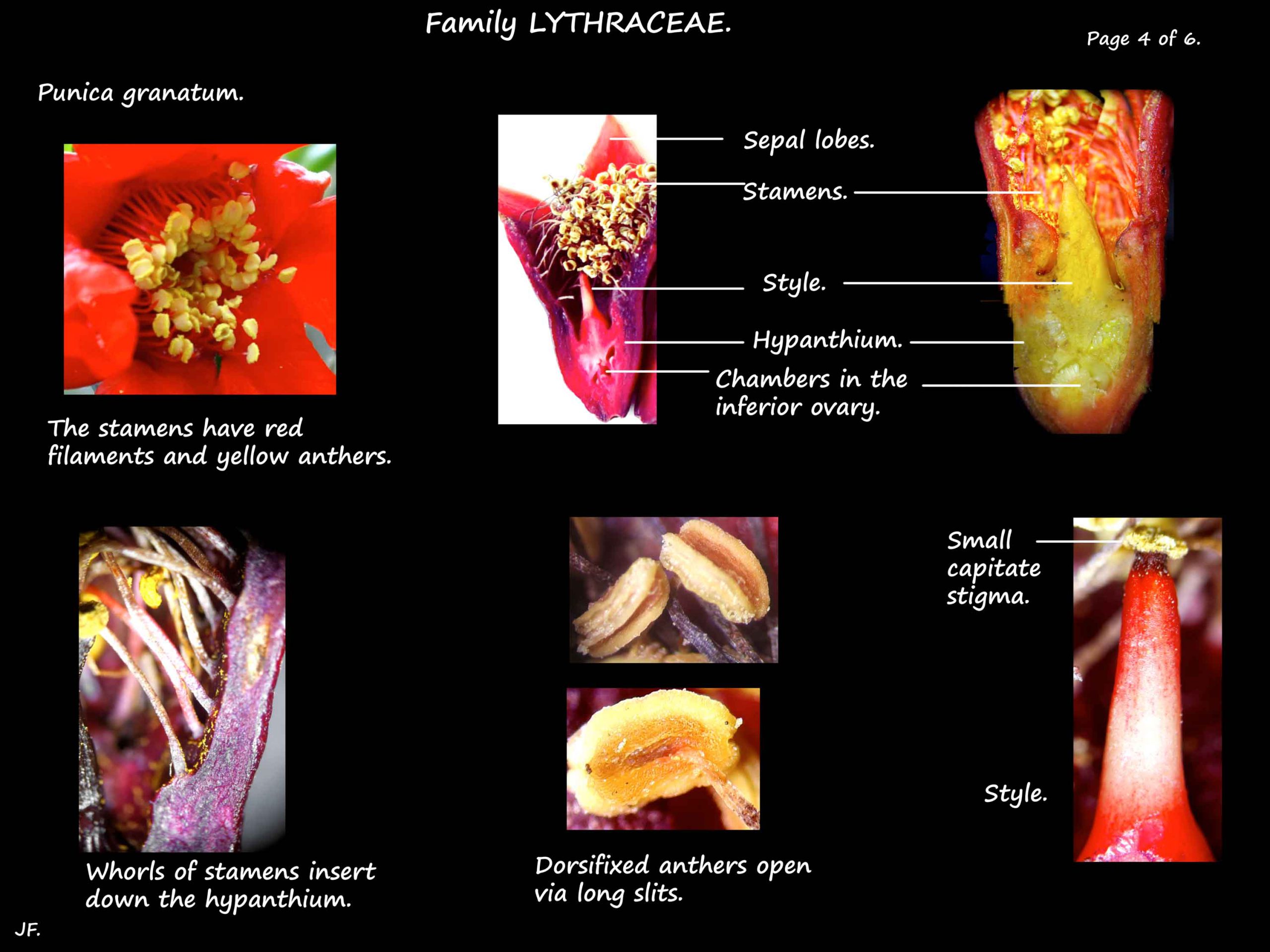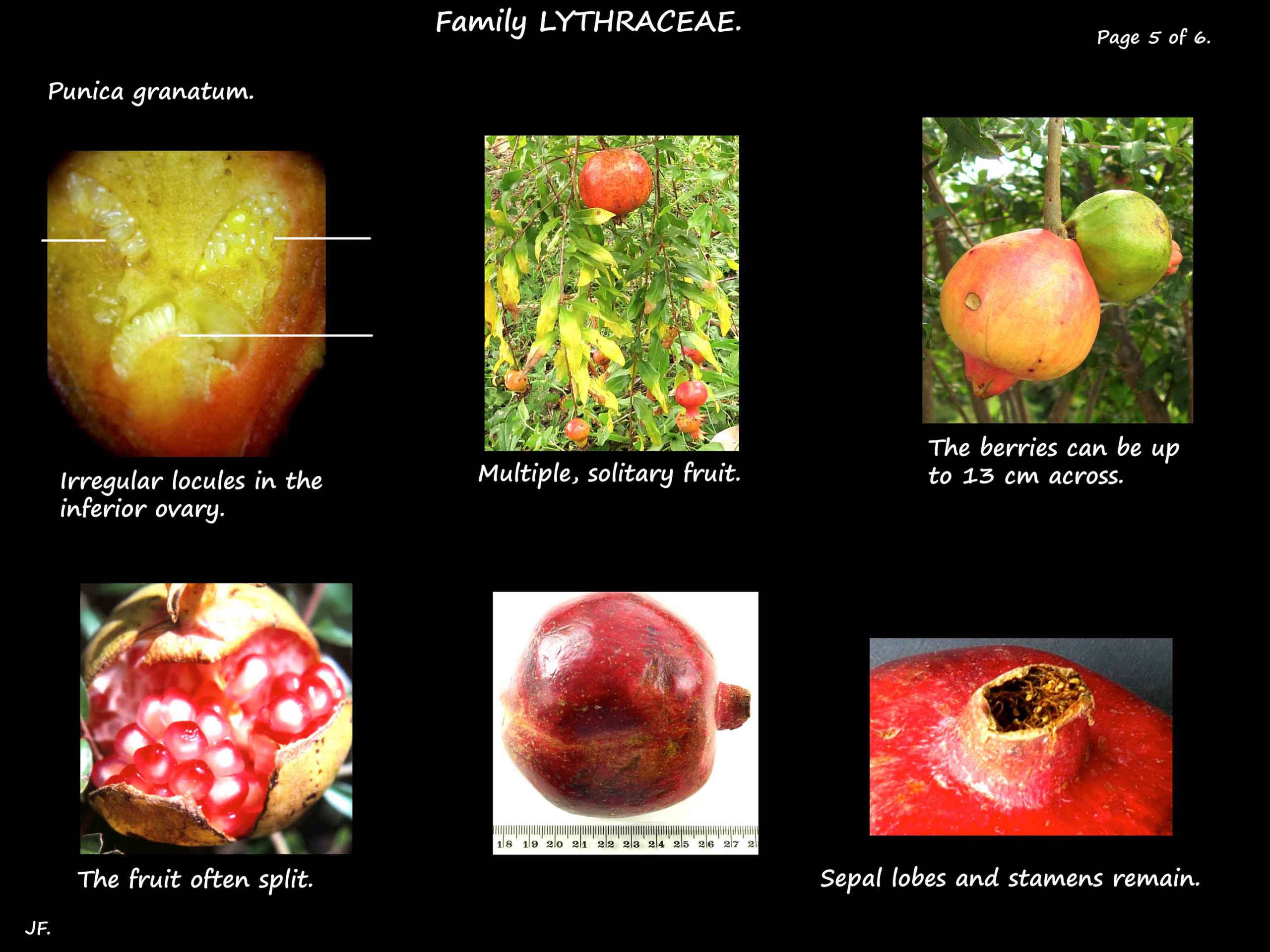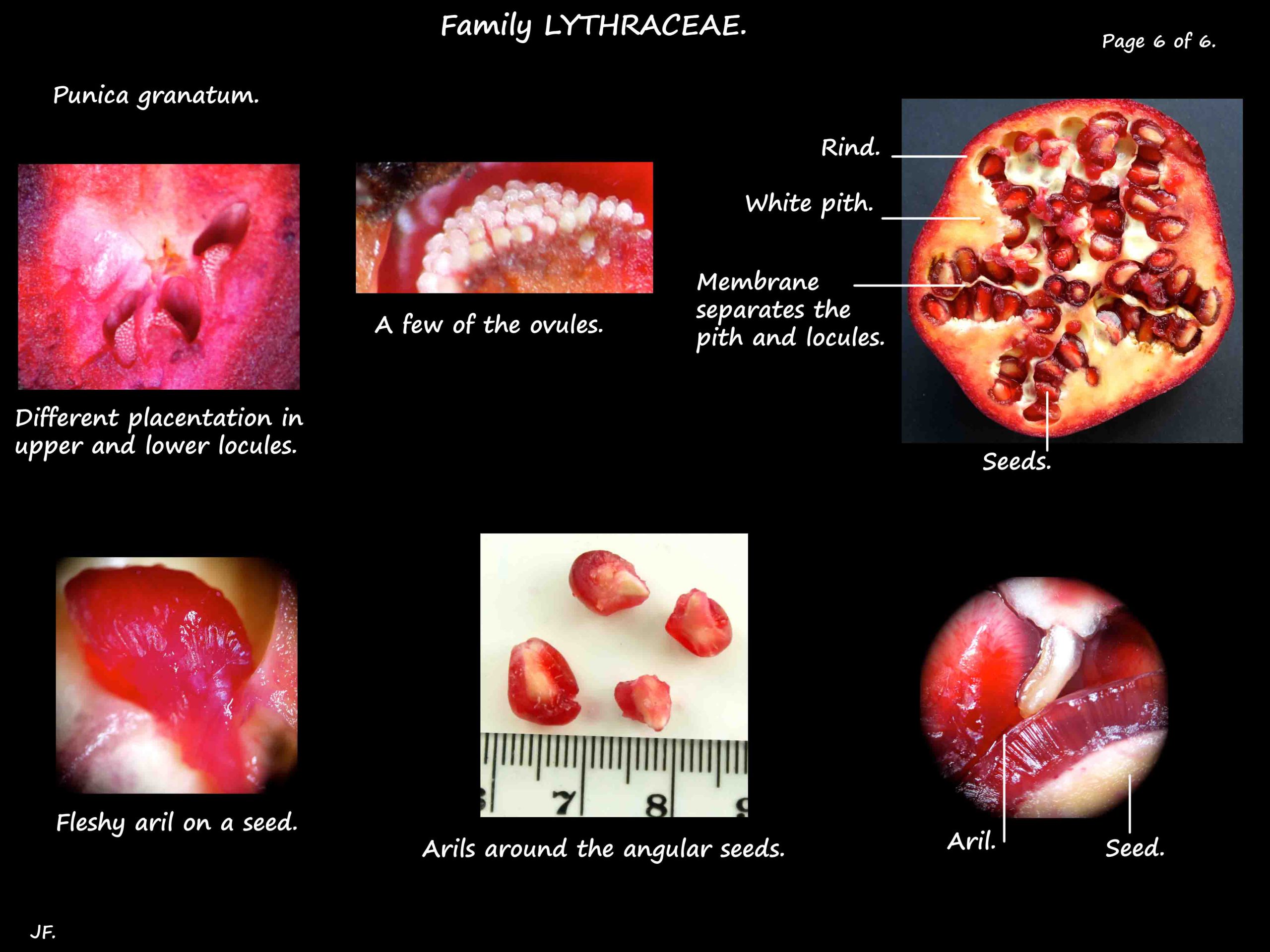Punica.
In Family Lythraceae > Subfamily Punicoideae it is still sometimes seen in its own family Punicaceae.
There are only 2 species – the cultivated P. granatum and the rarely seen P. protopunica.
The Pomegranate, P. granatum, native to areas from Iran to India and Asia, is widely naturalised.
Synonyms include P. florida, P. multiflora, P. nana and P. spinosa.
Punica granatum is a large shrub or small tree mostly up to 5 m but can grow to 8 or 10 m.
They are commonly multi-stemmed shrubs that sucker.
The bark is reddish-brown or grey.
The branches are opposite and often have spines up to 2 cm long.
Small branches are angled with 4 wings but later become round.
There are no hairs or stipules.
Leaves are opposite, sub-opposite or in tight clusters of 3 and occasionally 4.
On petioles a few mms long they are around 7 to 8 cm long and 1 -2 cm wide.
The blades can be narrowly elliptic, oblong, lanceolate or obovate.
The rounded or pointed tips have an apical nectary.
New growth is reddish.
They are deciduous to various degrees depending on the climate.
Inflorescences are terminal on the main branches or on very short side branches or spurs.
Flowers can be solitary or clusters of up to 5 or 6.
Often there is one terminal flower with a pair of smaller laterals.
Flowers are variable being from 3 to 6 cm wide and 4 cm long.
They have no stalk or a short one up to 3 mm long.
There are no bracts.
There are 2 types of flowers – male and bisexual.
The male, urn or vase shaped flowers are narrower with a constriction at the top of the hypanthium.
The wider bisexual flowers are bell-shaped with no constriction*.
Male flowers have a very small ovary, stigma and style.
The stamens are shorter than normal but longer than the style.
The flowers are infertile and fall off early.
Bisexual flowers have an obvious ovary with a long style and stigma.
The anthers are at about the same level as the style.
There are intermediate types between the male and bisexual flowers.
There is a leathery, red hypanthium with 5 to 8 (9) pointed sepal lobes on the rim.
There is a nectiferous disc at the base of the hypanthium.
There are 8 (5 – 9) petals attached between the sepal lobes.
They are oval to round and sometimes have a short, clawed base.
They are wrinkled and deep red to orange red (P. protopunica flowers are pink).
The petals fall off early.
The many stamens are inserted at various levels inside the hypanthium.
The pale red filaments hold pale yellow, dorsifixed anthers.
There are 7 to 9 (15) fused carpels in the inferior ovary.
The number of locules varies and they are often irregular in shape and size.
The locules each have from 20 to many ovules.
Those in the upper locules appear to have parietal placentation.
Those in the lower locules have axile placentation.
The united styles are around 1 cm long with a capitate stigma with papillae.
The fruit are roughly globular, leathery berries 4 to 13 cm across.
The calyx lobes and stamens remain attached.
They are red with a pink, purplish, yellowish or greenish tinge.
They sometimes split when ripe to expose the seeds.
Under the thick rind is a white fleshy tissue.
The locules, surrounded by a thin membrane, lie in this tissue.
The seeds, each with a large, fleshy aril (a fleshy appendage), lie in the locules.
The seeds are white and the arils almost white to pink, deep red or purple.
Each fruit has hundreds to over 1,000 angular seeds.
*Descriptions are contradictory but the most authoritative source I have seen is the 66 page article
“Pomegranate: Botany, Horticulture, Breeding” by D. Holland, K. Hatib, and I. Bar-Ya’akov,
in Horticultural Reviews, Volume 35 Edited by Jules Janick, Copyright & 2009 John Wiley & Sons, Inc.
J.F.
